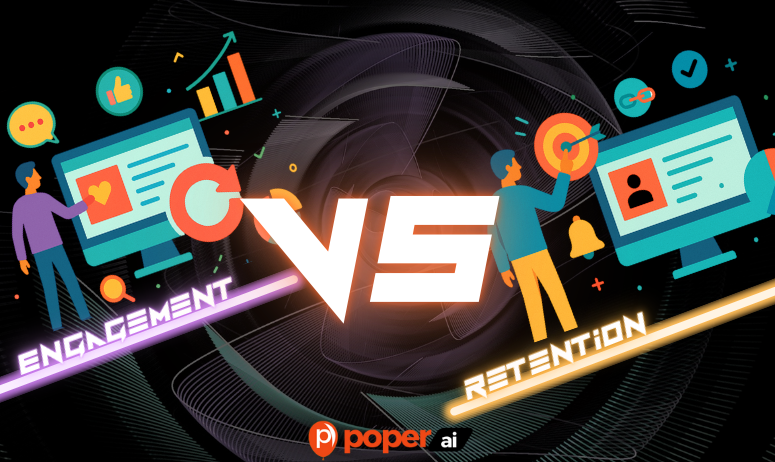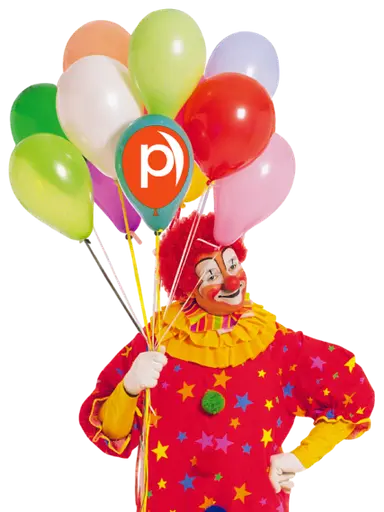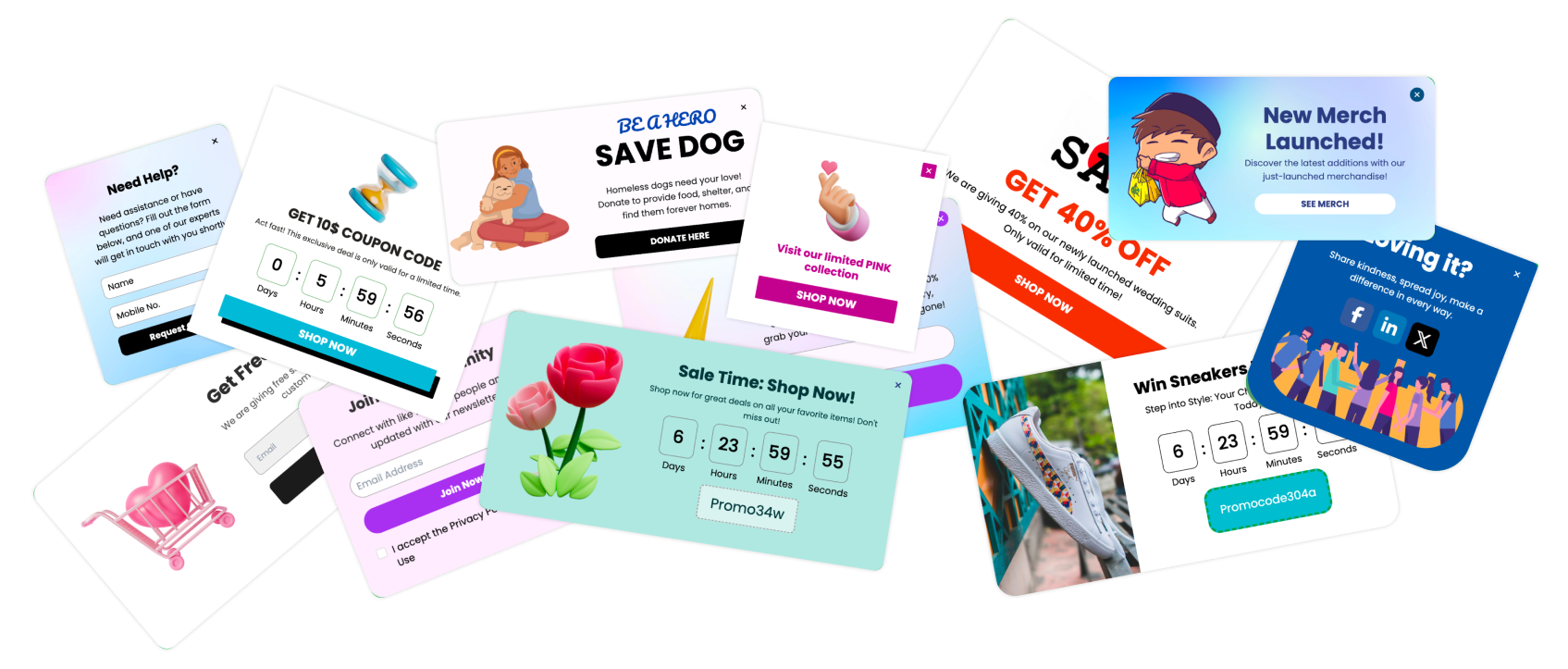“Engaging your users earns attention, but retaining them earns trust—and trust is the true currency of growth.”
In today’s digital world, user acquisition is no longer the only battlefield. Companies spend thousands getting a user to land on their site—but what happens next? Engagement keeps users active, and retention keeps them coming back. Without both, your funnel leaks revenue.
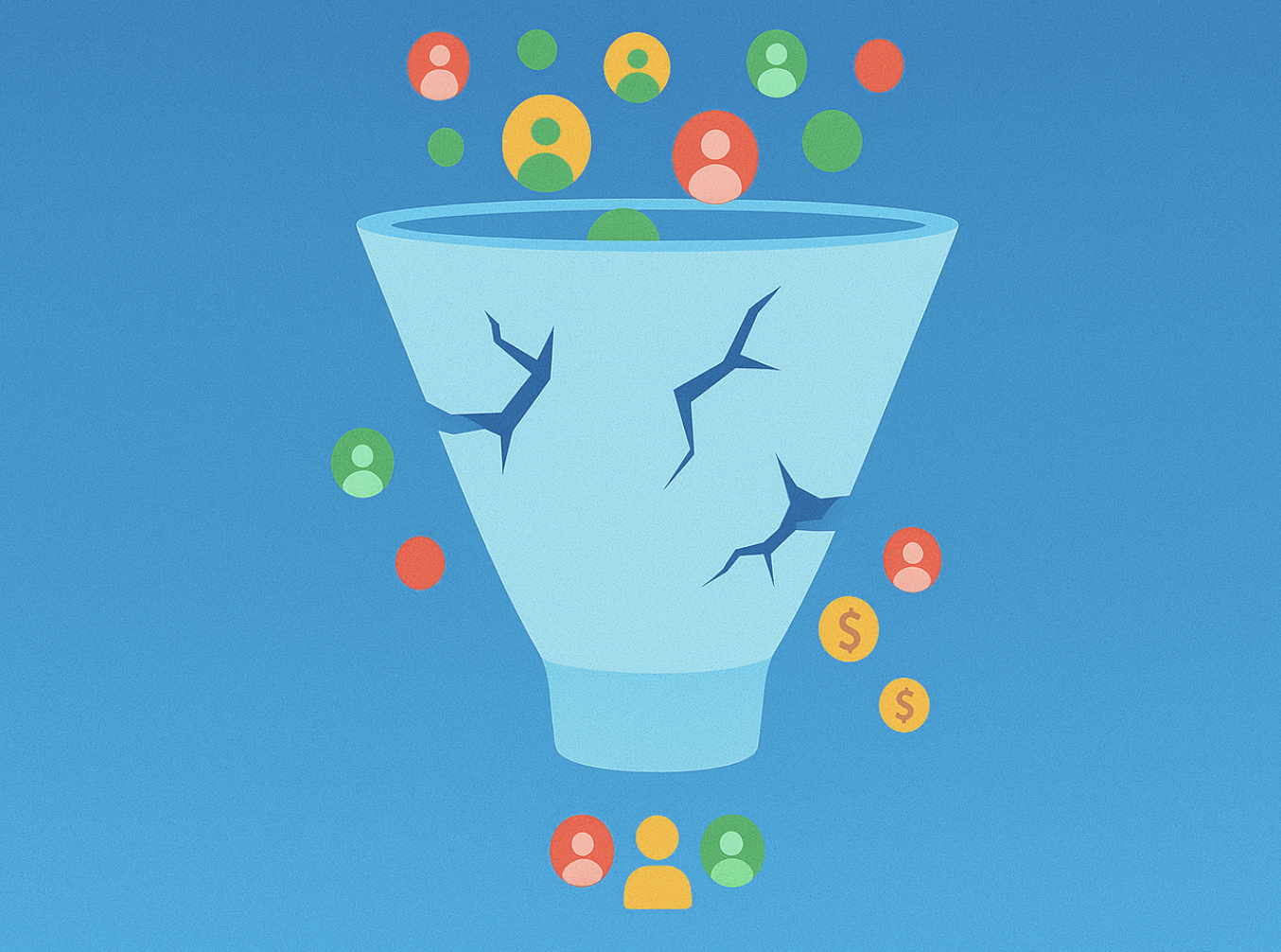
According to research:
Acquiring a new customer is 5x more expensive than retaining an existing one.
Increasing customer retention by just 5% can boost profits by 25% to 95%.
Engaged users are 2x more likely to convert than passive visitors.
If you want to build a sustainable digital product or brand, mastering both engagement and retention is non-negotiable.
Defining the Concepts Clearly
Before we dive deeper into tactics and strategies, it's critical to clearly define what engagement and retention really mean—not just theoretically, but in terms of how they impact your product, your metrics, and your users.
What Is User Engagement?
User engagement refers to how actively and meaningfully users interact with your product, website, or platform. It’s about how interested, involved, and invested your users are at any given moment.
Engagement answers questions like:
Are users clicking buttons?
Are they scrolling, commenting, or exploring features?
Are they coming back within the same session to explore more?
Example Metrics of Engagement:
Click-through rate (CTR)
Scroll depth
Session duration
Pages per session
Feature usage (e.g., how often a SaaS feature is used)

What Is User Retention?
User retention is the ability of a product or service to keep users coming back over a defined period. It reflects long-term value and loyalty, not just temporary activity.
If engagement is about what users do in the moment, retention is about whether they return later.
Key Retention Metrics:
Retention Rate (% of users returning after 7, 30, or 90 days)
DAU/MAU (Daily Active Users / Monthly Active Users)
Churn Rate (users who stop returning)
Repeat purchases or logins
Retention shows whether users find lasting value in your product. It’s one thing to capture attention—it’s another to keep it.
How They Differ—and Why It Matters
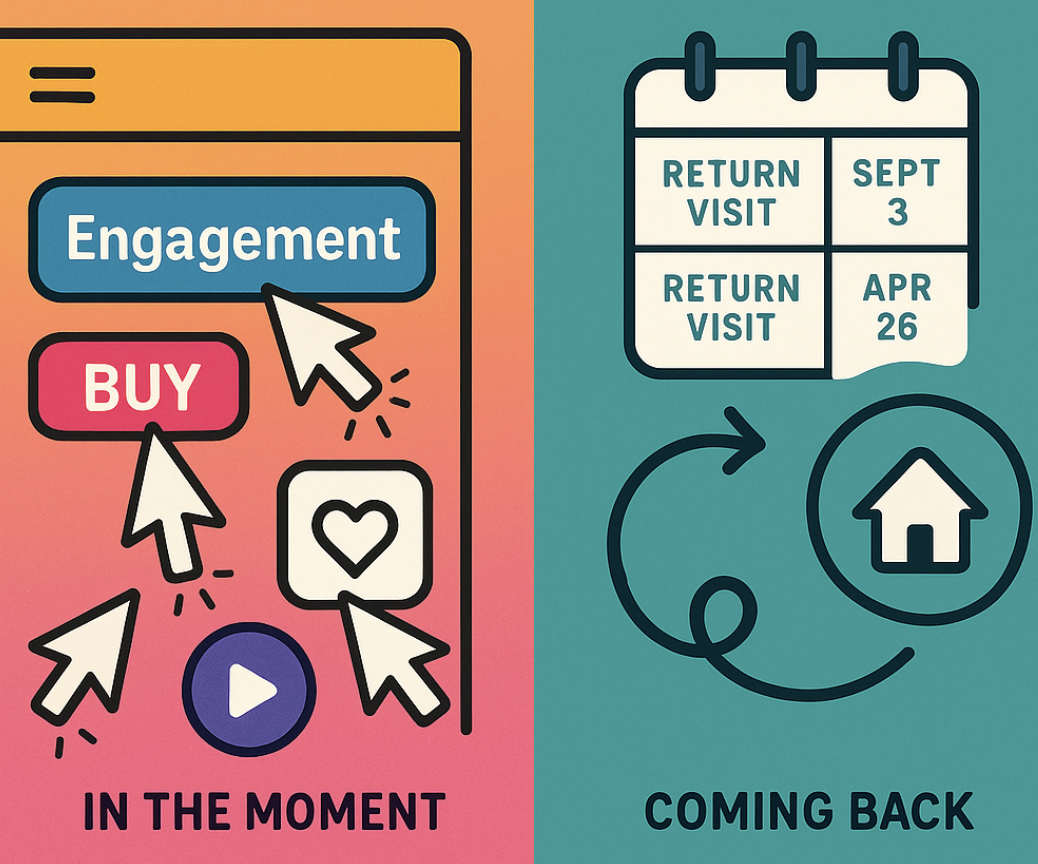
Let’s simplify the distinction:
| Aspect | Engagement | Retention |
|---|---|---|
| Focus | What users do during the session | Whether users come back later |
| Scope | Immediate behavior | Long-term loyalty |
| Timeframe | Real-time or session-based | Weekly, monthly, or lifecycle-based |
| Example | A user clicks through multiple blog posts | A user returns next week to read your latest post |
⚠️ Why it matters:
High engagement does not guarantee high retention. A user might love your interface for 10 minutes—but never return. Conversely, low engagement might mean you’re not providing enough instant value to encourage a return visit.
The Relationship Between Engagement and Retention
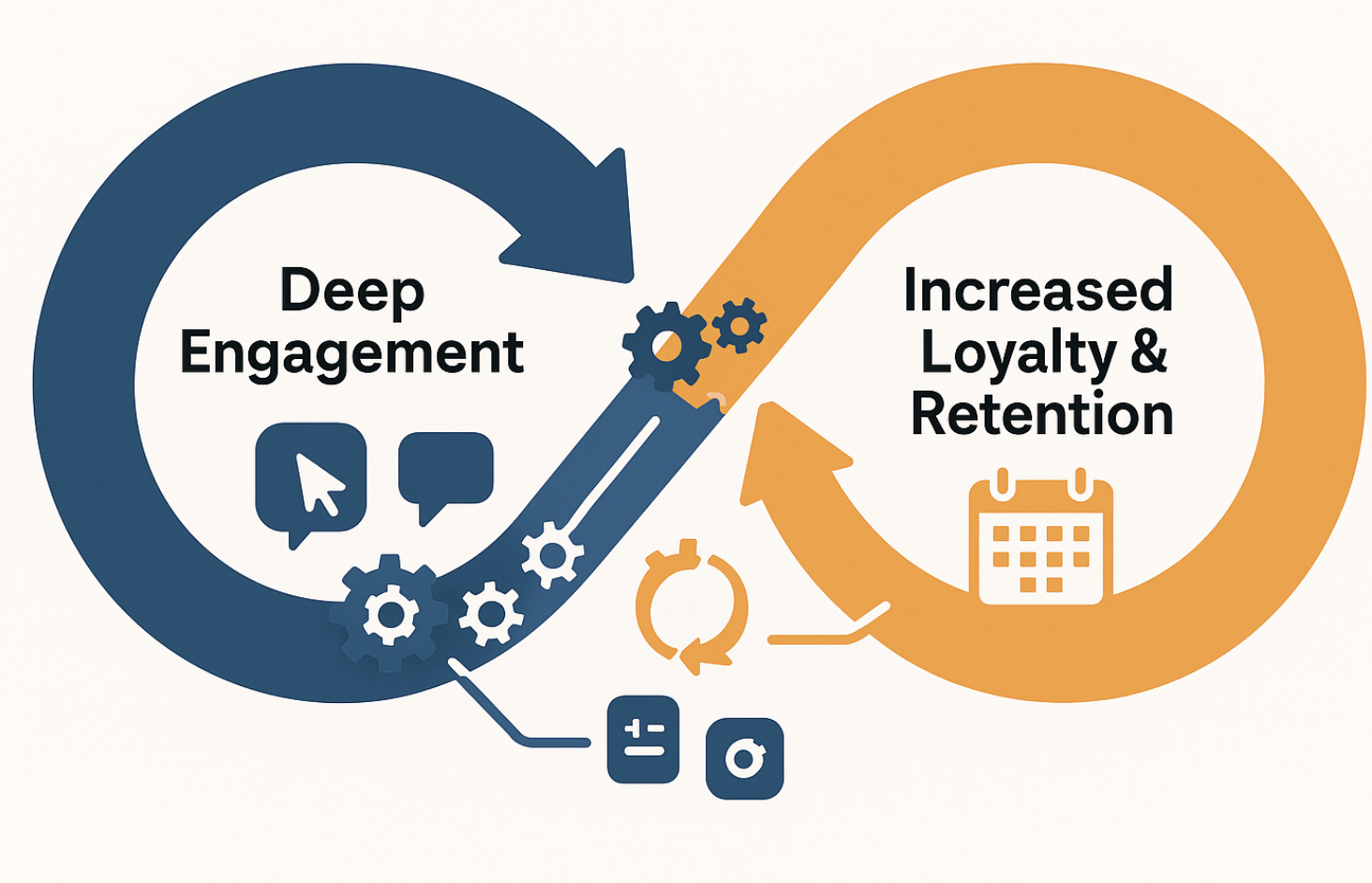
Here’s where it gets interesting: engagement fuels retention. Users who engage deeply are more likely to remember your product, feel emotionally invested, and return for more.
But it’s a loop:
High engagement → Higher satisfaction → More likely to return
High retention → More chances to re-engage users and build habits
Engagement Deep Dive
Engagement is the spark. It’s what captures attention, builds momentum, and drives users to interact with your digital product. But not all engagement is created equal. In this section, we’ll explore what types of engagement exist, how to measure them, and how to boost them strategically.
Types of Engagement (Passive vs. Active)
Engagement can be broadly categorized into two types:
| Type | Description | Example |
|---|---|---|
| Passive Engagement | Low-effort interactions that show interest but not necessarily intention | Scrolling, watching a video, reading an article |
| Active Engagement | Intentional actions that reflect high involvement or commitment | Clicking a CTA, filling a form, starting a chat |
Active engagement is the holy grail because it reflects stronger user interest and potential conversion intent. But passive engagement often lays the groundwork—you need both to drive long-term retention.
👉 Tip: Use Poper’s widgets like scroll-triggered popups or engagement timers to convert passive interactions into active ones.
Key Engagement Metrics to Track
Not all engagement metrics are equally valuable. Here are the most actionable metrics to monitor:
| Metric | What It Measures | Why It Matters |
|---|---|---|
| Session Duration | Time spent per visit | Longer time often indicates value |
| Pages per Session | Depth of exploration | Signals user interest and content relevance |
| Click-Through Rate (CTR) | Interaction with links/buttons | Shows effectiveness of CTAs |
| Event Tracking (feature usage) | Specific interactions (e.g., using a tool) | Reflects how useful your product features are |
| Scroll Depth | How far users scroll | Reveals content quality and user curiosity |
Psychological Drivers of Engagement
To create true engagement, you need to understand why users engage. Here are some of the top psychological triggers:
Curiosity – Teasing something interesting increases interaction.
Reciprocity – Offering value (like a free tool or discount) prompts users to give back.
Urgency – Time-sensitive offers drive quicker clicks.
Reward & Gamification – Interactive elements that lead to gratification (e.g., spin wheels, badges).
Personalization – Customized content builds trust and relevance.
Poper capitalizes on these principles with tools like:
Gamified popups (e.g., spin the wheel, scratch cards)
Personalized messaging based on user behavior
Urgency-driven exit-intent offers
Tools and Strategies to Increase Engagement
Let’s break down the tools that actually move the needle when it comes to engagement.
✅ Content Strategy
Use interactive content like quizzes, polls, and calculators.
Create short-form videos or micro-content that invites responses.
✅ Onsite Engagement Tools
Use smart popups triggered by scroll, time, or behavior.
Offer micro-incentives (discounts, freebies, early access).
✅ Personalization & Targeting
Segment users and show different messages based on their activity.
Use geo-targeting and referral data to customize the experience.
✅ Real-Time Interactions
Add chat widgets, live notifications, and dynamic forms.
Create engagement loops—actions that trigger new interactions (e.g., “like” a blog → show next article popup).
🛠️ How Poper Helps:
Poper allows you to launch engagement campaigns without code using:
Trigger-based popups
A/B testing
Personalized user flows
Dynamic embeds & nudges
Retention Deep Dive
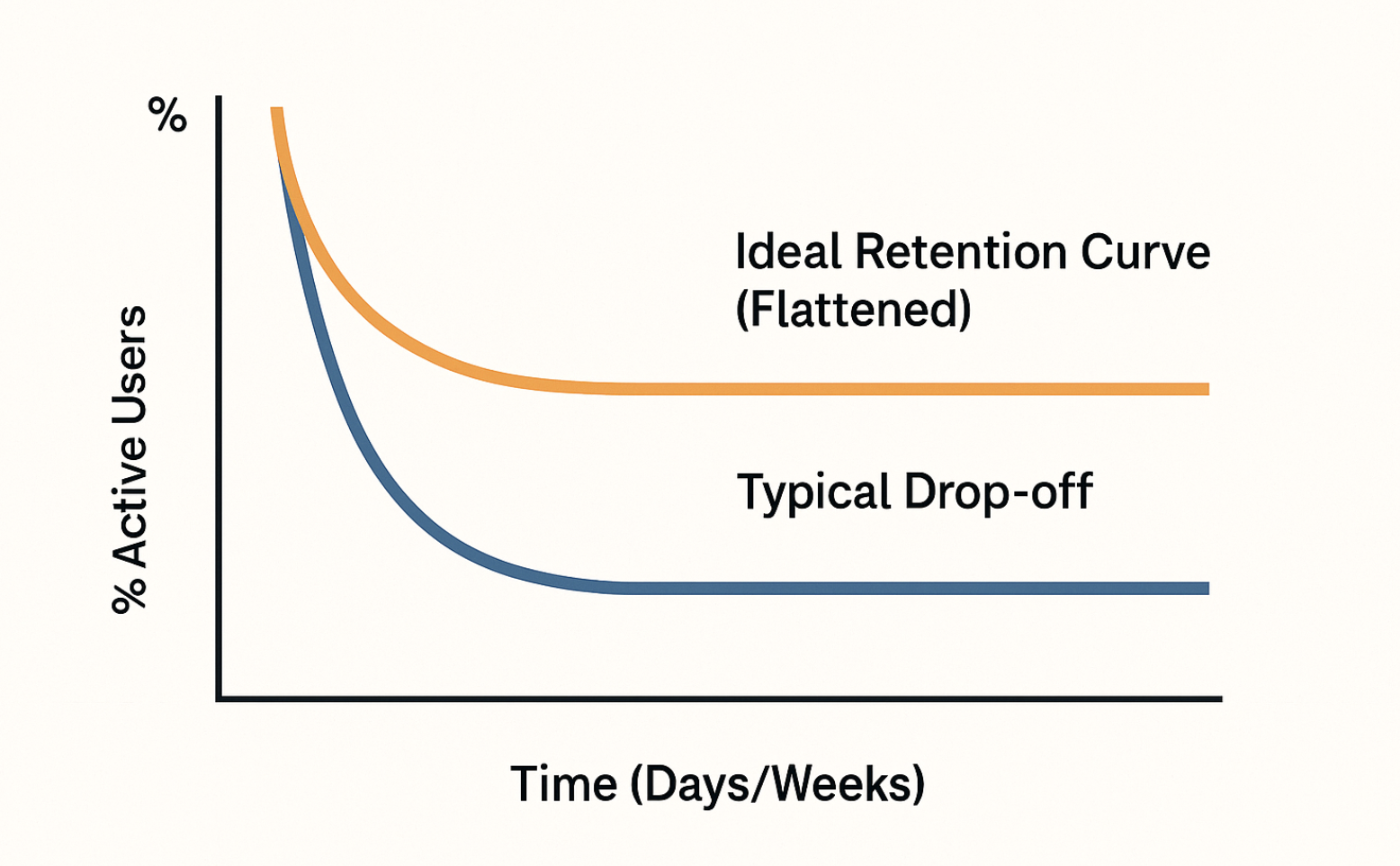
While engagement gets users in the door, retention keeps them coming back—and ultimately drives your business's long-term growth. A product that can consistently retain users is a product that’s valuable, sticky, and resilient against churn.
🧠 Remember: High engagement without retention is a leaky bucket. You must fix the holes before you pour more water in.
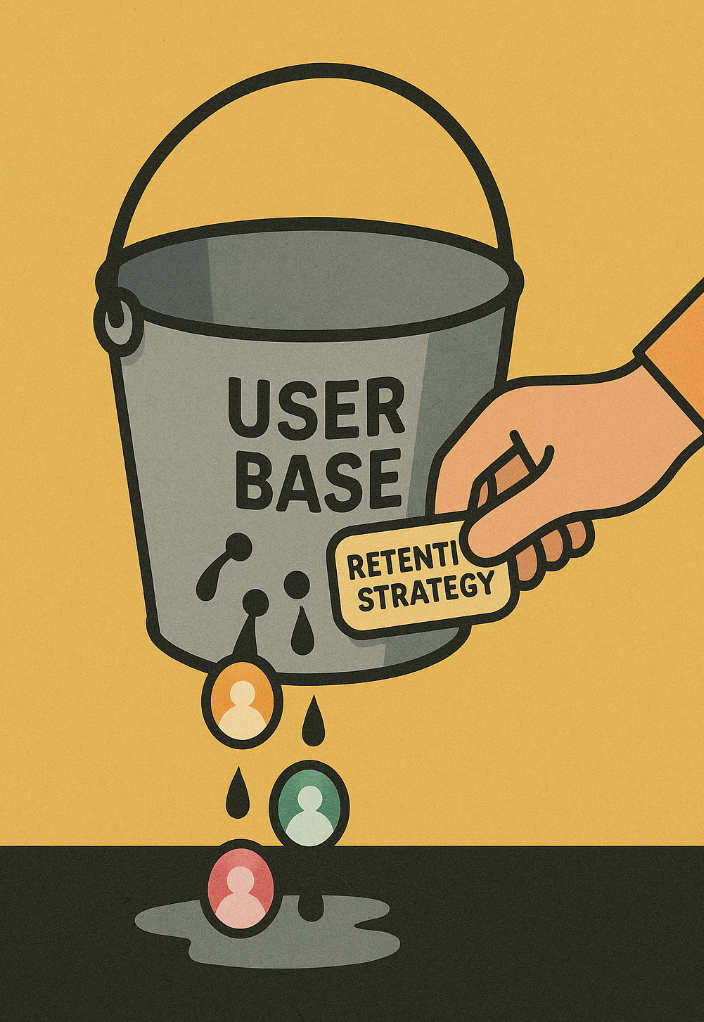
Understanding Short-Term vs. Long-Term Retention
Retention isn't one-size-fits-all. It's essential to understand the difference between short-term and long-term retention to tailor your strategies.
| Type | Focus | Measurement Window | Typical Goals |
|---|---|---|---|
| Short-Term Retention | Immediate post-signup activity | Days 1 to 7 | Activation, habit formation |
| Long-Term Retention | Ongoing product usage over time | Weeks to Months | Loyalty, lifetime value (LTV) |
🔑 Short-term retention is about ensuring your user sees value quickly. If they don’t, they won’t come back.
🔒 Long-term retention proves your product has a sustained place in their lives.
✨ Featured Snippet Targeting:
User retention refers to the ability of a product or service to keep users coming back over time. It is typically measured across specific intervals—like day 1, day 7, or day 30—and is a critical indicator of product-market fit and customer satisfaction.
Key Retention Metrics (DAU/WAU/MAU, Churn Rate)
Tracking retention means keeping an eye on how often users return and how quickly they leave.
| Metric | What It Measures | Why It Matters |
|---|---|---|
| DAU (Daily Active Users) | Number of users who engage daily | Indicates daily utility |
| WAU / MAU | Weekly or Monthly actives | Long-term stickiness |
| Retention Rate | % of users who return after X days | Core retention benchmark |
| Churn Rate | % of users who stop using your product | Inverse of retention |
| Cohort Retention | Behavior of user groups over time | Reveals patterns and lifecycle value |
📈 Pro Tip: Use cohort analysis to uncover where users drop off—and at what stage your experience breaks.
🚀 With Poper, you can launch re-engagement campaigns based on drop-off patterns—like showing a win-back popup to users who haven't visited in 7 days.
The User Lifecycle and Retention Curve
Understanding the stages your users move through can help you match retention strategies to behavior.
Typical Lifecycle Stages:
Acquisition
Activation
Engagement
Retention
Referral
Revenue
Your retention curve shows how many users stick around after signup. A flat curve = healthy retention. A downward curve = user drop-off.
📊 Sample Retention Curve Table:
| Day | % Active Users Remaining |
|---|---|
| Day 1 | 100% |
| Day 3 | 70% |
| Day 7 | 45% |
| Day 14 | 30% |
| Day 30 | 20% |
🎯 The goal? Flatten the curve by building habits early. Make users come back before they forget you exist.
Strategies to Boost Retention Across Stages
Retention isn't about just one feature—it’s about creating a full journey that makes users feel seen, valued, and empowered.
🧭 Onboarding That Shows Value Fast
Guide users to Aha! moments in under 60 seconds.
Use onboarding popups and tooltips (Poper makes this easy).
🔁 Habit-Forming Loops
Incorporate recurring value: new content, updates, challenges.
Add gamified progress bars or streaks.
🔔 Timely Communication
Set up re-engagement popups for inactive users.
Use exit-intent nudges to recover drop-offs.
🎁 Reward Loyalty
Offer perks for long-term users.
Create a VIP experience (exclusive popups, early access, loyalty bonuses).
🛠️ How Poper Helps:
With Poper, you can deploy retention campaigns like:
“We Miss You” popups for returning users
Embedded loyalty reminders or badges
Behavioral triggers to personalize every touchpoint
Engagement vs. Retention Across Business Models
Not all user behaviors are created equal. Engagement and retention can—and should—be measured differently depending on the nature of your business. What works for a SaaS company may not apply to an e-commerce store or a mobile game.
Understanding how your business model influences user behavior is critical to choosing the right strategies, tools, and metrics. Let’s break it down.
SaaS Platforms: Engagement Drives Value, Retention Drives Growth
Software-as-a-Service (SaaS) businesses live and die by retention. Why? Because customer lifetime value (LTV) directly determines profitability.
Key Engagement Indicators:
Daily usage of core features
Account expansion (e.g., more seats, integrations)
Feature adoption over time
Key Retention Strategies:
Contextual popups during onboarding (Poper helps here!)
Usage-based nudges to encourage deeper engagement
Personalized renewal campaigns
E-Commerce Sites: Engagement Fuels Transactions, Retention Fuels Repeat Purchases
For e-commerce, first-time conversions come from engagement, but profitability comes from retention.
Key Engagement Signals:
Time on site
Pages per session
Cart activity and wishlist additions
Key Retention Strategies:
Post-purchase popups with cross-sell or loyalty offers
Win-back campaigns for cart abandoners or lapsed customers
Subscription models and loyalty points
Mobile Apps: Engagement is Habit, Retention is the Goal
Mobile apps—especially in the freemium space—rely on daily or weekly usage. If you lose them early, they’re unlikely to come back.
Engagement Focus Areas:
Daily logins or session length
Time spent per feature
Push notification response
Retention Plays:
Gamification (streaks, challenges, points)
Personalized popups based on in-app behavior
Re-engagement campaigns via push or in-app prompts
Content and Media Platforms: Engagement Builds Habit, Retention Grows Audience
In platforms like blogs, streaming services, or news portals, engagement is the gateway to subscription and ad revenue—but retention reflects brand loyalty.
Key Engagement Signals:
Articles read per session
Time on page
Video completion rates
Retention Builders:
Subscription popups at the right time
Weekly recap popups or content suggestion overlays
Exit-intent nudges for non-subscribers
Case Studies and Real-World Examples
Understanding theory is useful, but seeing how engagement and retention play out in real-world scenarios makes the concepts far more actionable. In this section, we explore three real-world examples across industries that highlight different dynamics of user behavior.
A High-Engagement, Low-Retention Product: The Shiny Object Trap
Imagine a new mobile fitness app that gains traction quickly. Users flood in from TikTok ads, loving the sleek UI and gamified step counter.
Engagement Metrics Look Great:
80% of users open the app daily in the first week
Time spent in-app averages 10 minutes per day
Social sharing spikes due to leaderboard features
But after 14 days?
Retention Crashes:
Only 12% of users are active by Day 30
Core feature fatigue sets in quickly
Users don’t find long-term value beyond novelty
A Low-Engagement, High-Retention Platform: The Utility Player
Consider a B2B invoicing SaaS tool. Users log in only once or twice a month—to generate invoices or download reports.
Engagement Looks Minimal:
Average logins per user: 2/month
Feature usage remains narrowly focused
Time on platform: ~3 minutes per session
Yet:
Retention Is Outstanding:
85% retention over 6 months
Churn rate under 5%
Net promoter score (NPS) consistently high
Balanced Engagement and Retention: The Gold Standard
Let’s look at a language learning app like Duolingo.
It Crushes Both:
Users engage daily with quick lessons
Gamified elements (streaks, XP, leaderboards) drive consistency
Monthly retention holds strong at 40–50%
What’s the secret?
Consistent micro-engagements that don’t overwhelm
Clear progression paths (levels, goals, rewards)
Re-engagement tools (push reminders, in-app messages)
Common Pitfalls and Misconceptions
While engagement and retention are crucial for the long-term success of any product, there are several common pitfalls businesses often fall into when managing these metrics. Understanding these misconceptions is essential to develop a holistic and effective strategy that benefits both user engagement and retention.
Mistaking High Engagement for Loyalty
High engagement doesn’t always mean loyalty. Many companies confuse frequent interactions with actual commitment to the product. For example, users might visit your website or app frequently, but if they only interact with superficial features, such as scrolling through your homepage or watching ads, they aren’t demonstrating a deeper connection.
This is especially true for platforms that focus heavily on short-term engagement tactics—like popups that encourage users to click or a gamified process that rewards daily logins.
Over-Optimizing for Retention at the Cost of Experience
The opposite issue is also a danger: focusing too much on retention can stifle innovation and compromise the overall user experience. While high retention rates are a sign that users are sticking around, too much focus on holding users back—such as using constant reminders or barriers—can create frustration.
The balance comes from nurturing users while making the experience enjoyable. For example, rewarding returning users with benefits (loyalty programs, personalization) is a great strategy, but pushing too hard can cause user fatigue.
Ignoring the Power of Onboarding
Another common mistake is neglecting the onboarding process. Many businesses focus heavily on keeping users once they've signed up, but the initial experience can make or break long-term retention.
Without a smooth, informative, and engaging onboarding process, users are more likely to drop off before they even see the value in your product.
In-app tutorials and tooltips are essential for ensuring users understand how to use your product.
Progress bars or “first step” indicators keep users motivated to engage fully with the product.
Welcoming messages or success celebrations can help users feel good about their decision to sign up.
Tools, Technologies, and Metrics
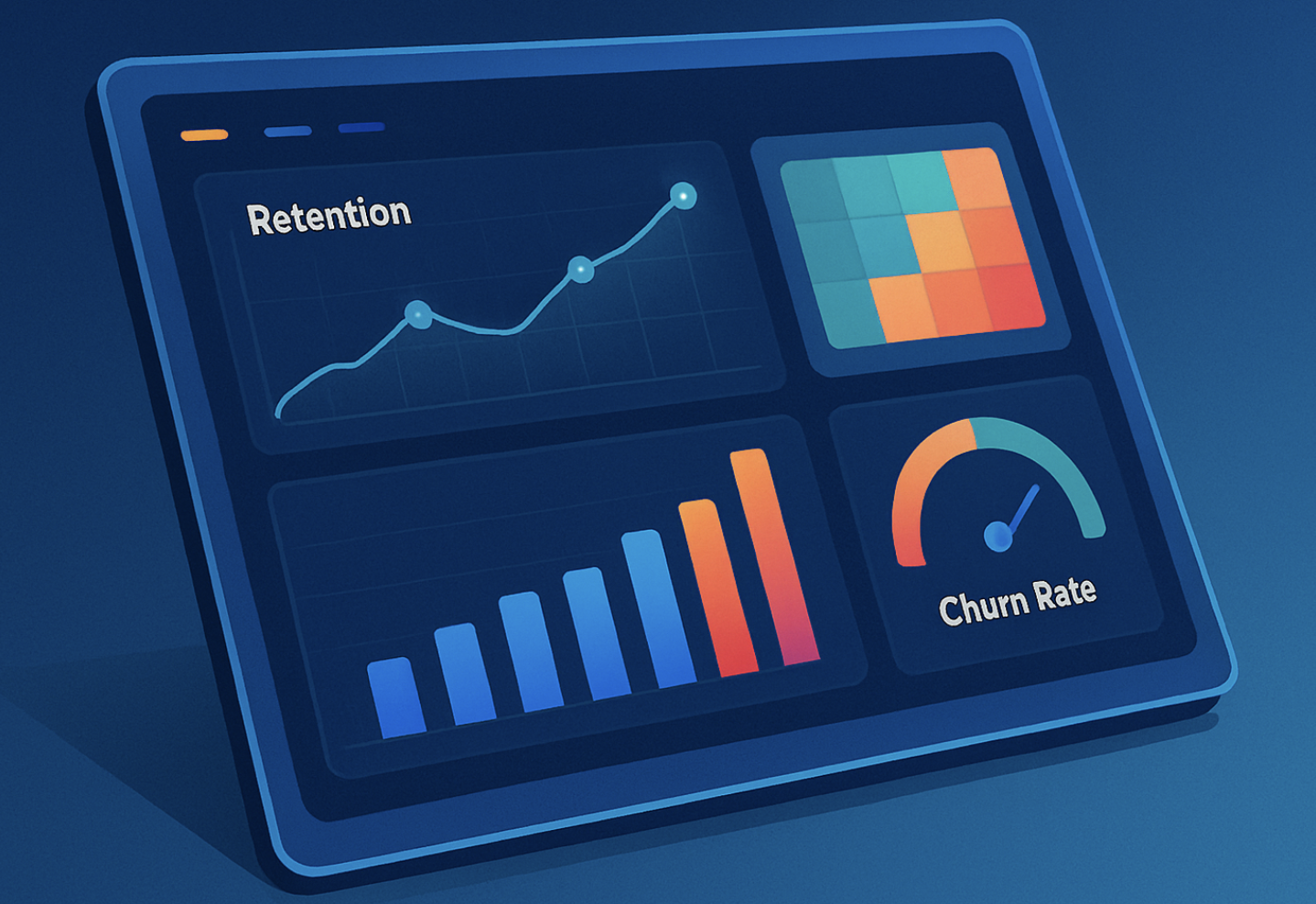
In the digital age, the key to improving user engagement and retention is to leverage the right tools and technologies. These tools allow you to track user behavior, optimize engagement strategies, and understand what drives retention. Data-driven decisions can significantly enhance the user experience and the overall performance of your platform.
CRM and Analytics Platforms
Customer Relationship Management (CRM) tools are vital for tracking user interactions and understanding their behavior. CRM platforms like Salesforce or HubSpot can help segment your audience based on engagement levels, purchase history, and behaviors. This segmentation allows for personalized communication, which is crucial for both engagement and retention.
Analytics platforms like Google Analytics or Mixpanel provide insights into how users interact with your website or app. You can track:
User behavior flows
Conversion rates
Drop-off points
User journeys
By having detailed insights, you can adjust your engagement strategies to keep users coming back and identify areas that need improvement.
Behavioral Analytics Tools
Behavioral analytics tools are designed to capture deeper insights into how users engage with your product. Unlike standard analytics, these tools focus on user intent, motivations, and actions within the app or website. Platforms like Hotjar or Crazy Egg track clickmaps, heatmaps, and session recordings, offering a visual way to understand user behavior.
By analyzing how users interact with different features, you can uncover:
Which areas of your product users love
Where they get stuck
Which features get the most attention
This is critical for refining engagement strategies, like tweaking popups or altering the content on your site to maintain interest.
A/B Testing and Feedback Loops
A/B testing is one of the most effective ways to optimize both engagement and retention. By testing variations of your features or popups, you can determine which ones produce the best results.
For example, you might test:
Two different styles of call-to-action (CTA) buttons
Variations of reward structures for loyalty programs
Different frequency for re-engagement popups
Feedback loops are also vital. These provide direct user insights and can be obtained through surveys, user interviews, or feedback popups. This direct feedback helps you continuously improve engagement tactics and retention efforts.
Engagement and Retention Dashboards
Tracking engagement and retention metrics through comprehensive dashboards is essential for staying on top of your goals. Dashboards give you a real-time snapshot of how users are interacting with your product. This allows you to adjust your strategy quickly based on the data you’re receiving.
You should track:
Daily, Weekly, Monthly Active Users (DAU/WAU/MAU)
Churn rate
Customer Lifetime Value (LTV)
Net Promoter Score (NPS)
Feature adoption rates
Having these metrics front-and-center allows you to prioritize improvements and ensure that your engagement and retention strategies are always data-backed.
Aligning Teams Around Engagement and Retention
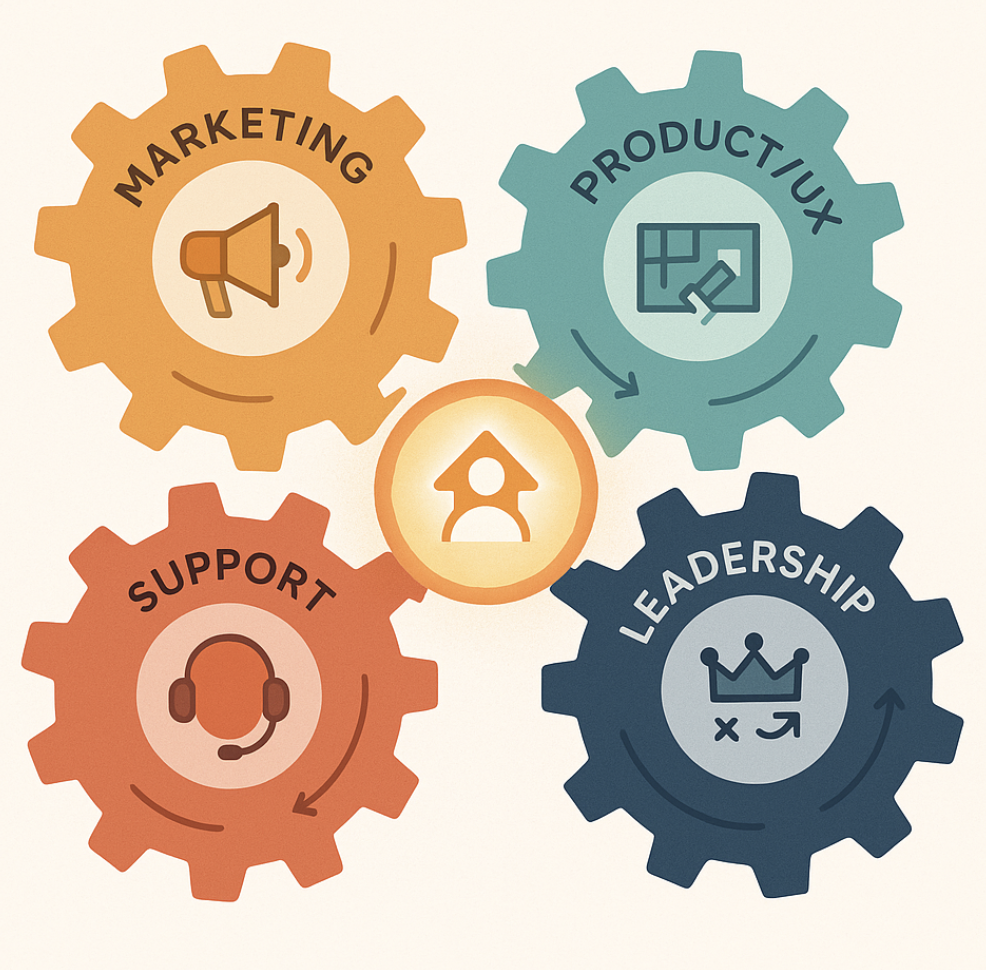
Building strong user engagement and sustaining retention requires a holistic approach, where every team in the organization plays a crucial role. Collaboration between marketing, product, customer support, and leadership is essential to ensure that engagement and retention goals align with the overall company vision.
Marketing’s Role
Marketing is at the forefront of driving user acquisition, but they also have a critical role in boosting engagement and retention. Here’s how:
Personalized campaigns: Using insights from CRM and analytics platforms, marketers can create targeted campaigns that speak directly to different user segments, ensuring that users are not only acquired but also engaged from day one.
Retention-focused content: Marketing teams should create content that keeps users engaged, whether through email newsletters, re-engagement campaigns, or loyalty programs. This content should always remind users of the value the product brings and encourage regular interaction.
Product and UX Teams
Product and UX teams are directly responsible for shaping the user experience. Their role in engagement and retention is pivotal, as a great product will naturally retain users.
Key responsibilities include:
Onboarding: A smooth and intuitive onboarding process increases the chances of users returning. It’s essential that product teams focus on educating users and guiding them through the product's value right from the start.
User feedback integration: Constantly gathering feedback from users and iterating on the product based on that data is key to both engagement and retention. A/B testing and user interviews are invaluable in this process.
Customer Support and Success
The role of customer support in user retention is undeniable. Providing quick and effective support is one of the most crucial factors in making users feel valued. When users face challenges, they need to know that help is easily accessible.
Customer success teams can:
Proactively engage with users: Regular check-ins, personalized support, and offering tailored solutions to users' needs help in retaining customers long term.
Troubleshoot and solve issues: Fast response times and issue resolution contribute to positive experiences, which leads to higher retention.
Leadership and Company Culture
Leadership sets the tone for how engagement and retention are prioritized across the organization. When engagement and retention are at the core of a company’s mission, it influences all aspects of the business:
Resource allocation: Ensuring that product teams have the resources to focus on both short-term and long-term retention.
Company-wide understanding: Educating everyone in the company—from developers to marketing professionals—about the importance of user engagement and retention.
Summary: Building a Holistic Strategy
Building a successful engagement and retention strategy is not just about attracting users—it's about ensuring they stay engaged and continue to find value in your product or service. Here are the key takeaways:
Engagement and retention are interconnected: Engagement drives retention, and retention keeps users coming back for more. Without one, the other will be hard to sustain.
Understanding the lifecycle: Users go through different stages, from acquisition to long-term retention. Tailor your strategies to address each stage.
Cross-team collaboration is essential: Marketing, product, customer support, and leadership must work together to align goals and implement effective strategies for engagement and retention.
Use data to your advantage: Tools like analytics platforms, A/B testing, and behavioral insights are essential to understand user behavior and optimize for both engagement and retention.
FAQs
Can a product survive with only engagement or only retention?
While engagement and retention are both important, a product needs to strike a balance between the two. Engagement helps in acquiring new users and maintaining their attention, but without retention, users may drop off before fully adopting your product. Similarly, focusing only on retention without fresh engagement can lead to stagnation and churn. A holistic approach is necessary for sustainable growth.
How long should I track user retention metrics?
Tracking user retention is a long-term process. Early-stage tracking might focus on short-term retention (e.g., 1-day, 7-day retention), but as your product matures, you’ll want to track long-term retention metrics (e.g., 30-day, 90-day retention) to ensure that users continue to find value. Continuous tracking gives insights into trends and helps optimize your efforts over time.
What are some early indicators of poor retention?
High churn rates: If users are dropping off after the first use or within a short time, it indicates that either your product isn’t engaging or there’s a friction point in the experience.
Low active users: If users are logging in but not engaging with the core features of your product, it may suggest that they’re not finding enough value.
Low repeat activity: If users aren’t coming back after their initial visit, there could be issues with onboarding, value delivery, or user experience.How does gamification impact engagement and retention?
Gamification is a powerful tool for boosting engagement and enhancing retention. By adding game-like elements such as rewards, challenges, or leaderboards, you encourage users to interact with your product more frequently. This leads to increased user motivation, which enhances both engagement and retention. Gamification creates a sense of accomplishment, community, and competition, making the product experience more enjoyable and addictive.
Should startups focus more on engagement or retention initially?
For startups, the initial focus should be on engagement. It’s important to build a user base and create strong interactions from the beginning. Once you have a solid user base, you can shift focus toward retention, ensuring that these engaged users stick around. The goal is to create a virtuous cycle where engagement feeds retention and vice versa.


